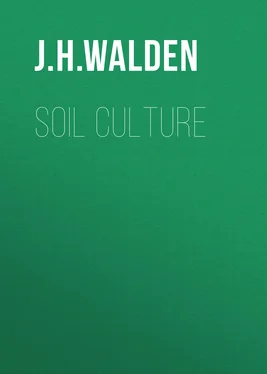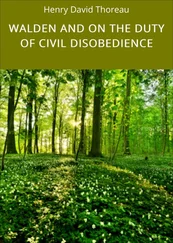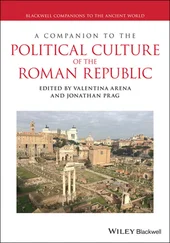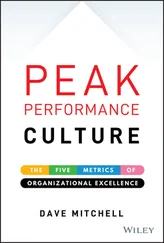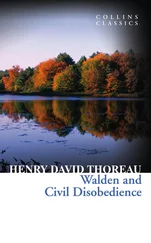J. Walden - Soil Culture
Здесь есть возможность читать онлайн «J. Walden - Soil Culture» — ознакомительный отрывок электронной книги совершенно бесплатно, а после прочтения отрывка купить полную версию. В некоторых случаях можно слушать аудио, скачать через торрент в формате fb2 и присутствует краткое содержание. Жанр: Руководства, Биология, Компьютерное железо, foreign_edu, на английском языке. Описание произведения, (предисловие) а так же отзывы посетителей доступны на портале библиотеки ЛибКат.
- Название:Soil Culture
- Автор:
- Жанр:
- Год:неизвестен
- ISBN:нет данных
- Рейтинг книги:3 / 5. Голосов: 1
-
Избранное:Добавить в избранное
- Отзывы:
-
Ваша оценка:
- 60
- 1
- 2
- 3
- 4
- 5
Soil Culture: краткое содержание, описание и аннотация
Предлагаем к чтению аннотацию, описание, краткое содержание или предисловие (зависит от того, что написал сам автор книги «Soil Culture»). Если вы не нашли необходимую информацию о книге — напишите в комментариях, мы постараемся отыскать её.
Soil Culture — читать онлайн ознакомительный отрывок
Ниже представлен текст книги, разбитый по страницам. Система сохранения места последней прочитанной страницы, позволяет с удобством читать онлайн бесплатно книгу «Soil Culture», без необходимости каждый раз заново искать на чём Вы остановились. Поставьте закладку, и сможете в любой момент перейти на страницу, на которой закончили чтение.
Интервал:
Закладка:
J. H. Walden
Soil Culture; Containing a Comprehensive View of Agriculture, Horticulture, Pomology, Domestic Animals, Rural Economy, and Agricultural Literature
TO THE PRACTICAL CULTIVATORS OF THE SOIL,
The True Lords of the Manor,
THIS VOLUME IS DEDICATED,
BY THEIR SINCERE FRIEND,
The Author.PREFATORY NOTE TO THE READER
If "he who causes two blades of grass to grow where but one grew before, is a benefactor of his race," he is not less so who imparts to millions a knowledge of the methods by which it is done.
The last half century has been the era of experiments and writing on the cultivation of the soil. The result has been the acquisition of more knowledge on the subjects embraced, than the world had attained in all its previous history. That knowledge is scattered through many volumes of numerous periodicals and books, and interspersed with many theories, and much speculation, that can never be valuable in practice. In the form in which it is presented, it confuses, rather than aids, the great mass of cultivators. Hence the prejudice against " book-farming ." Provided established facts only are presented, they are none the worse for being printed.
The object of this volume is to condense, and present in an intelligible form, all important established facts in the science of soil-culture. The author claims originality, as to the discovery of facts and principles, in but few cases. During ten years of preparatory study for this work, he has sought the rewards of industry, in sifting out the certain and the useful from the hypothetical and the fanciful, and the results of judicious discrimination between fallacy and just reasoning, in support of theories. This volume is designed to be a complete manual for all but amateur cultivators. While it is believed that he who follows its directions will be certain of success, it is not intended to disparage the merits of other works, but to encourage and extend their perusal. We can not too strongly recommend to young culturists to keep themselves well posted in this kind of literature, and give to every discovery and invention in this science a fair trial; not on a large scale, so as to sink money in fruitless experiments, but sufficient to afford a sure test of their real value. To no class of men is study more important than to soil-culturists.
It is believed that the directions here given, if followed, will save millions of dollars annually to that class of cultivators who can least afford to waste time and money in experimenting. With beginners it is important to be successful at first; which is impossible without availing themselves of the experience of others. While we thus aim to give our volume this exclusively practical form, and utilitarian character, we do not undervalue the labors of amateur cultivators. A meed of praise is due to those who are willing to spend time and money in experiments, by which great truths are evolved for the benefit of mankind.
Perfection is not claimed for this volume. But the author hopes nothing will be found here that is untrue. A fear of inserting errors may have induced us to omit some things that may yet prove valuable. If anything seems to be at variance with a cultivator's observation, in a given locality, he will discover in our general principles on climate, soil, and location, that it is a natural result.
Accurate as far as we go has been our motto. It is hoped the form is most convenient. All is arranged under one alphabet, with a complete index. The author has consulted many intelligent cultivators and writers, who, without exception, approve his plan. All agree in saying that it is designed to fill a place not occupied by any other single volume in the language. It is impossible, without cumbering the volume, to give suitable credit to the authors and persons consulted. Suffice it to say, the author has carefully studied all the works mentioned in this volume, and availed himself of a great variety of verbal suggestions, by scientific and practical men. If this work shall, in any good degree, serve the purpose for which it is intended, it will amply reward the author for an amount of labor, experiment, observation, and study, appreciable only by few.
J. H. Walden.New York, January 1, 1858 .
SOIL CULTURE
ACCLIMATION
This is the art of successfully changing fruits or plants from one climate to another. Removal to a colder climate should be effected in the spring, and to a warmer one in the fall. This may be done by scions or seeds. By seeds is better, in all cases in which they will produce the same varieties. Very few imported apple or pear trees are valuable in this country; while our finest varieties, perfectly adapted to our climate, were raised from seeds of foreign fruits and their descendants. The same is true of the extremes of this country. Baldwin apple-trees, forty or fifty years old, are perfectly hardy in the colder parts of New England; while the same imported from warmer sections of the Union fail in severe winters. This fact has given many new localities the reputation of being poor fruit-regions. When we remove fruit-trees to a similar climate in a new country, they flourish well, and we call it a good fruit-country. Remove trees from the same nursery to a different climate and soil, and they are not hardy and vigorous, and we call it a poor fruit-country. These two localities may be equally good for fruit, with suitable care in acclimating the tree and preparing the soil. Thus the rich prairies of central Illinois are often said not to be adapted to fruit. Give time to raise fruits from the seed, and to apply the principles of acclimation, and those rich prairies will be among the great fruit-growing regions of the world. Two things are essential to successful fruit-culture, on all the alluvial soils of the Northwest: raise from seed, and prune closely and head-in short, and thus put back and strengthen the trees for the first ten years, and no more complaints will be heard.
The peach has been gradually acclimated, until, transplanted from perpetual summer, it successfully endures a temperature of thirty-five degrees below zero. This prince of fruits will yet be successfully grown even beyond the northern limits of Minnesota. Many vegetables may also be grown in very different climates, by annually importing the seed from localities where they naturally flourish. Sweet potatoes are thus grown abundantly in Massachusetts. We wonder this subject has received so little attention. We commend these brief hints to the earnest consideration of all practical cultivators, hoping they may be of great value in the results to which they may lead.
ALMONDS
Almonds are natives of several parts of Asia and Africa. They perfectly resemble the peach in all but the fruit. The peach and almond grow well, budded into each other. In France, almond-stocks are preferred for the peach. Their cultivation and propagation are in all respects the same as the peach.
Varieties. —1. Long, hard shell. This is the best for cultivation in western and middle states, and in all cold regions. Very ornamental.
2. Common sweet. Productive in middle states, but not so good as the first.
3. Ladies' thin shell. Fruit large, long, and sweet; the very best variety, but not so hardy as the first two. Grows well in warm locations, with slight protection in winter.
4. The bitter. Large, with very ornamental leaves and blossoms. Fruit bitter, and yielding that deadly poison, prussic acid.
5. Peach almond. So called from having a pulp equal to a poor peach. Not hardy in northern climates. Other varieties are named, but are of no consequence to the practical cultivator.
Читать дальшеИнтервал:
Закладка:
Похожие книги на «Soil Culture»
Представляем Вашему вниманию похожие книги на «Soil Culture» списком для выбора. Мы отобрали схожую по названию и смыслу литературу в надежде предоставить читателям больше вариантов отыскать новые, интересные, ещё непрочитанные произведения.
Обсуждение, отзывы о книге «Soil Culture» и просто собственные мнения читателей. Оставьте ваши комментарии, напишите, что Вы думаете о произведении, его смысле или главных героях. Укажите что конкретно понравилось, а что нет, и почему Вы так считаете.
